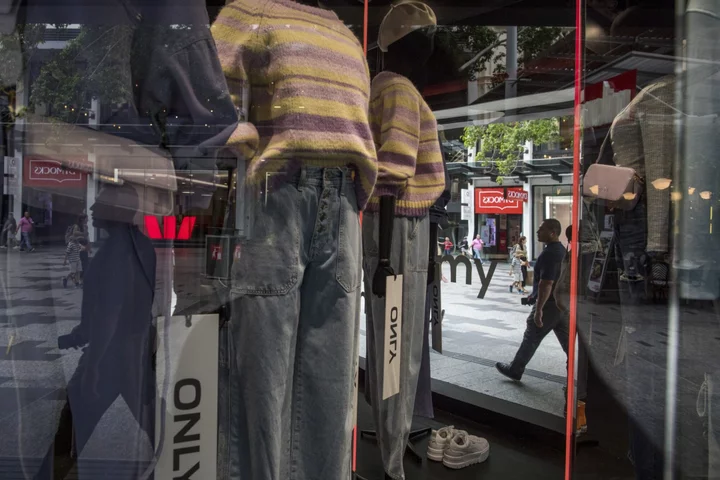Australian retail sales were flat in April, ending a three-month streak of gains, suggesting consumers are reining in spending as interest rates near a peak and cost of living pressures remain elevated.
Sales were little changed from a month earlier, confounding economists’ forecasts for a 0.3% increase, Australian Bureau of Statistics data showed Friday. The result was driven by weaker food-related spending.
“Retail turnover has plateaued over the last six months as consumers spent less on discretionary goods in response to cost-of-living pressures and rising interest rates,” said Ben Dorber, head of retail statistics at the ABS. “Spending was again soft in April but was boosted by increased spending on winter clothing in response to cooler and wetter than average weather.”
The result suggests consumers are beginning to cut back in the face of rising borrowing costs, in line with the central bank’s forecasts. The RBA unexpectedly hiked this month to take the cash rate to an 11-year high of 3.85% from a record-low 0.1% when it began tightening a year ago.
“Growth in the real economy is going to be patchy over 2023,” said Sean Langcake, head of macroeconomic forecasting for Oxford Economics Australia. “But this does not rule out further interest rate hikes. Inflation remains uncomfortably high, and we think the RBA will make the case that more needs to be done.”
Retail sales are a key input for rate decisions as consumption accounts for roughly 60% of gross domestic product. Resilient households have been a key factor in policy makers’ confidence the economy can withstand higher rates.
However, there are signs that consumers are beginning to buckle under the burden of higher borrowing costs and elevated inflation, threatening to push the A$2.2 trillion ($1.4 trillion) economy into reverse in the first quarter.
In a further headwind, a large number of mortgages that were fixed for three years at record low rates during the pandemic are due to switch over to current rates in coming months.
Today’s retail report also showed:
- Clothing, footwear and personal accessories climbed 1.9% and department stores rose 1.5%, the only categories to gain
- Food-related spending was down, with falls in both cafes, restaurants and takeaway food services, 0.2% lower, and food retailing, 0.1%
- Food retailing recorded its first fall after 13 straight rises
Bloomberg Economics expects weakness in 2023 as the full impact of policy tightening passes through to household budgets. Economist James McIntyre estimates a decline in first-quarter retail sales volumes means consumption could knock 0.1 percentage point off GDP growth in the first quarter — potentially leading to a contraction in the economy in that period.
First-quarter GDP data will be released on June 7.
The RBA is predicting a deceleration in spending, estimating consumption growth of 1.7% by year’s end, down from a 7.5% gain in 2022.
Stronger-than-expected population growth is seen as an important offset to consumer spending weakness. “Surging population growth will help Australia avoid a technical recession in 2023,” McIntyre said.
--With assistance from Tomoko Sato.
(Adds comment from economist, more details from report, chart.)

